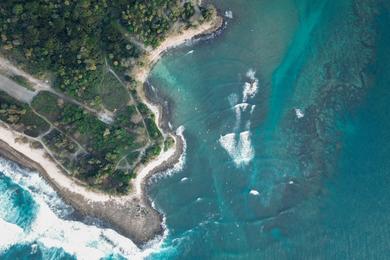Overview
The Galapagos shark, belonging to the Carcharhinidae family, is a large, robust shark with a distinctive grey to brown coloration and a white underside. It can be distinguished from similar species like the blacktip shark by its lack of black tips on its fins and its more rounded snout.
Commonly found in:
- Ecuador
- Panama
- Colombia
- Costa Rica
- Mexico
- Peru
- Chile
- Venezuela
- Guatemala
- Honduras
- Nicaragua
- El Salvador
- Belize
- United States
Over the past 61 years, there have been 8 recorded attacks by Galapagos Sharks. Of these attacks, they have occurred at sea and at the following beaches:
Size and Weight
- Size: Males average between 6.5-8.2 feet when mature; females average between 7.2-9.8 feet when mature
- Weight: Males typically weigh 85-195 pounds; females typically weigh 135-220 pounds
- Swimming speed: Average cruising speed of 1-2 mph, with bursts up to 20-25 mph
Interaction with Humans
- Interaction with Humans: Generally curious but not aggressive; rare attacks
- Avoidance: Stay out of water at dusk, night, and dawn; avoid murky waters
- Activity: Most active during night and twilight hours
Lifespan and Diet
- Lifespan: Males live approximately 20-25 years; females live approximately 25-30 years
- Diet: Fish, squid, octopuses; hunts by circling and rushing prey
Migratory Patterns
Galapagos sharks exhibit seasonal migratory patterns. They typically start in the Galapagos Islands and move towards the coast of Costa Rica and Panama during certain times of the year. Some individuals have been observed traveling to seamounts in the open ocean between the Galapagos and mainland South America. They may also migrate to areas around Cocos Island and Malpelo Island. However, their full migratory routes are not yet fully understood, and some populations may be more resident than others.



